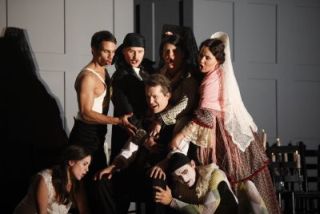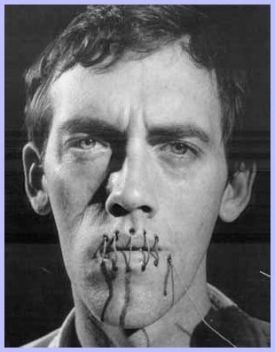Bases Loaded
From The Weekly StandardThe Summer of Beer and Whiskey: How Brewers, Barkeeps, Rowdies, Immigrants, and a Wild Pennant Fight Made Baseball America’s Game
Author: Edward Achorn
Hardcover: 336 pages
Publisher: PublicAffairs
Much has been written about the origins and earliest years of baseball, and much, much more has been written about the period after the founding of the American League and the introduction of the rule to make foul balls strikes in 1901, from which point most people date the modern game.
Much less well known is the period from the founding of the National League (NL) in 1876 to the end of the century, and Edward Achorn helps to fill in the gap with The Summer of Beer and Whiskey — an allusion to the short-lived American Association (AA), also known as the Beer and Whiskey League, for its owners’ practice (unlike that of the more abstemious NL) of selling alcoholic beverages to spectators. In particular, he concentrates on the exciting pennant race of the 1883 season, which he regards as the real beginning of baseball — or “base ball,” as it was then known — as the national pastime.
The AA, which was one of several startup leagues in the last quarter of the 19th century, and which was to amalgamate with the National League nine years later, had been founded the year before as a sort of salon des refusés for teams expelled from the stodgier NL by its dictatorial president, William Hulbert of the Chicago White Stockings. Hulbert objected not only to the beer and whiskey but also to the AA teams’ charging only 25 cents admission and playing on Sundays. That kind of thing, he thought, would attract the wrong sort to the game and would drive away the professional classes, which, though smaller in numbers than the raucous crowds that showed up for AA games, were clearly a better class of people.
Achorn’s history lesson goes down easily not only because of his account of the epic battle between the St. Louis Brown Stockings and the Philadelphia Athletics, which was full of drama and came down to the last day of the season, but also because of the colorful characters who populated the game in those days. Chief among them, and the hero of this volume, was a German immigrant named Chris Von der Ahe, a St. Louis grocer and saloonkeeper who bought the Browns chiefly as a way to sell more beer. Though he was a buffoonish character of ridiculous appearance and very uncertain command of English, Von der Ahe was farsighted about the future of baseball and deserves to be remembered as one of the pioneers of the professional game—as well as a memorable figure in his own right.
Von der Ahe’s own knowledge of the game was sketchy, to say the least. At one point, he bragged that his diamond at Sportsman’s Park was the biggest in the league, until it was explained to him that they were all of a standard size. But he was shrewd enough to hire as his manager an Irish immigrant named Ted Sullivan, who built the team into a powerhouse, and he was temperamental enough to fire Sullivan and take over the team himself as the season approached its exciting climax. His passionate nature got him into more than one kind of trouble, and eventually he lost the team and all his money. A hundred years ago this summer, at the age of 61, he died broke and, like so many of his star players of 30 years before, all but forgotten.
Even without the beer and the Sunday games, there was a more-than-faintly scandalous air about baseball in those early days. Professional players were frequently drunks and womanizers, or in trouble with the law. Some who came from what were considered “good” families—like Harry Stovey, born Harry Stowe, of Philadelphia and the Athletics—changed their names so that the family name would not be sullied and, in some cases, so that the families wouldn’t know how they were making their living.
The game also took a hard physical toll on its players, whose careers tended to be short. In those days, pitchers were routinely expected not only to pitch complete games but to pitch on successive days—until their arms were so worn out that a second pitcher had to be put in. Some teams ran to the luxury of a third pitcher, but usually this was a player at another position who could turn his hand to pitching when both regular pitchers were incapacitated. Then the incapacitated ones, if they were capable of walking at all, would often have to play in the field and take their turn at bat. Team rosters consisted of only 12 or 13 men, with those not playing on a given day obliged to take tickets.
Though the “dead ball” era is usually dated from 1901 to 1920, the 1883 ball was perhaps even deader. It was rubber-centered, rather than cork, and only one was normally used per game — which made rigor mortis set in by the late innings. Foul balls were still not strikes, but those caught on the bounce were outs. Seven balls were required for a walk, and batters could choose high or low strike zones. The plate umpire had to adjust with each batter, and was further kept busy by having to rule from behind the plate on long foul balls and plays on the base paths, as he was the only umpire on the field. There is no record of spectators actually killing an umpire, but more than one of them had to run from a mob of “fans” (Ted Sullivan may have coined the term that season) — in fear for his life.
Batters hit by a pitch did not take their base, which led some pitchers, such as George Washington “Grin” Bradley of the Athletics and Tony Mullane of the Browns, to hit people deliberately as a form of intimidation. Pitchers did not stand on a mound, but in a four-by-six-foot pitcher’s box, which allowed them a brief run-up for their delivery. The front edge of the pitcher’s box was only 50 feet from home plate and further increased a pitcher’s scope for intimidation. Officially, at that time, the pitcher’s elbow was not allowed to rise above his shoulder, a relic of the days when pitching had been underhand. But the rule was widely flouted in 1883 and was changed to allow an overhand delivery the following year.
The Athletics’ most sensational (if not always their best) pitcher was Dan “Jumping Jack” Jones, recruited right out of Yale, the Ivy League champions, in the heat of the pennant struggle as relief for the team’s fading stars, Bradley and little Bobby “Shrimp” Mathews. Jones’s distinctive delivery involved a leap skywards to give further impetus to the ball and was widely ridiculed even when it briefly made him successful. Nobody as yet wore a glove, except for the catcher — Jones’s battery-mate from Yale, Al Hubbard, was signed along with him — who had two of them, one on each hand with the fingers cut off. Naturally, playing hurt was a normal part of the game for more than just pitchers.
“Base Ball is old in the world,” a joke from the St. Louis Globe-Democrat of the period informed its readers, “as is proven by the very first line of Genesis: ‘In the big inning . . .’ ” Baseball may not be as old as the world, but it’s good to learn that the joke is almost as old as baseball, whose colorful early days and characters, especially Chris Von der Ahe, could hardly have hoped for a better retelling than Edward Achorn’s.
Discover more from James Bowman
Subscribe to get the latest posts to your email.







